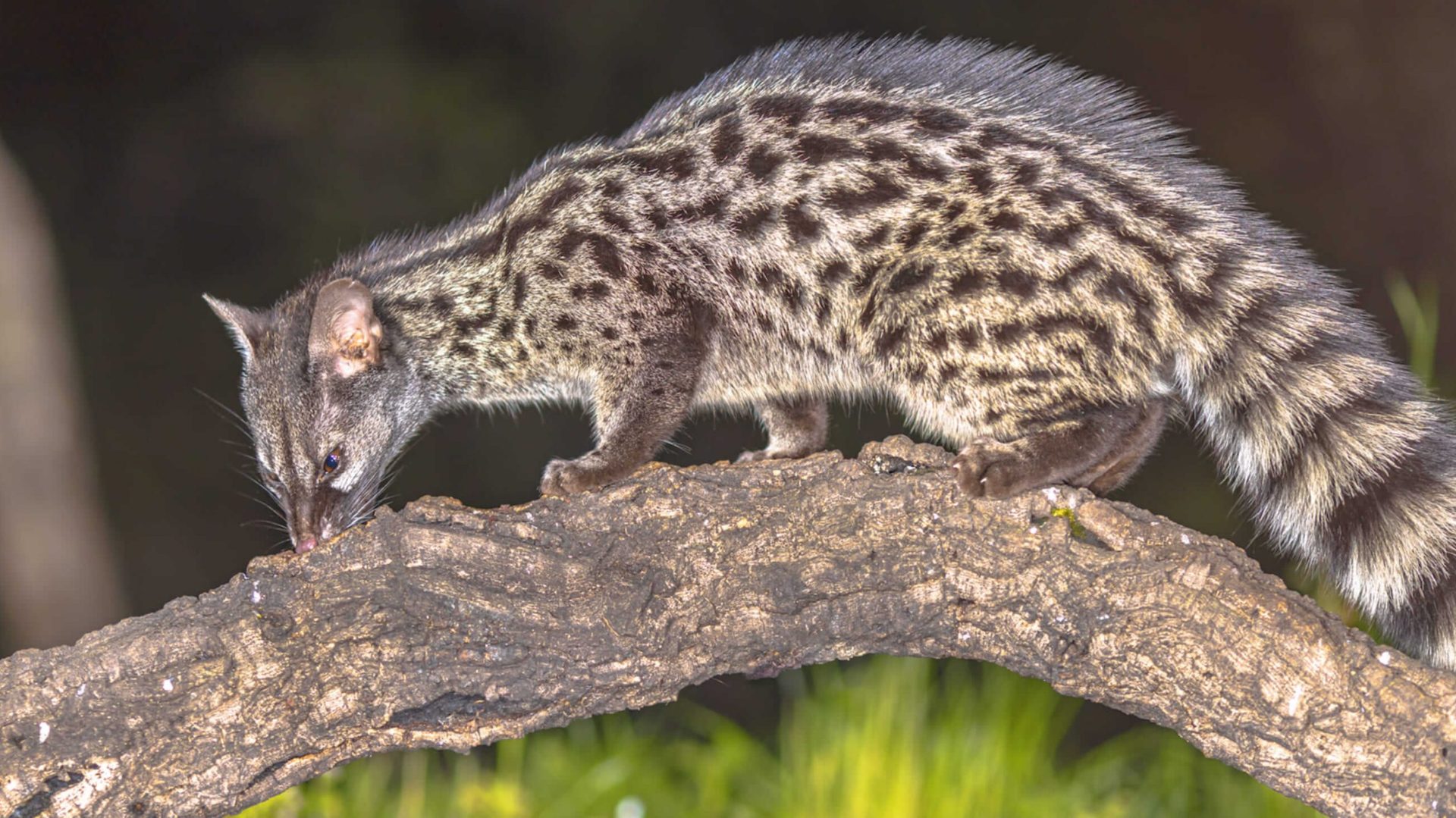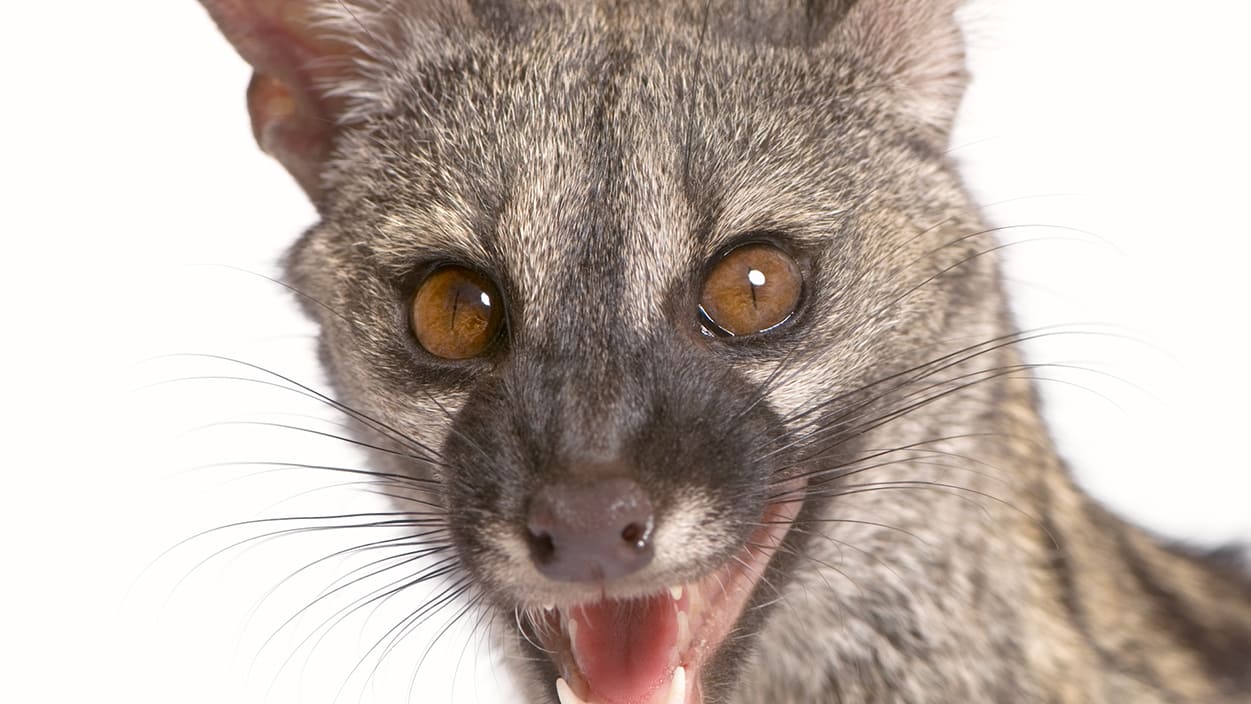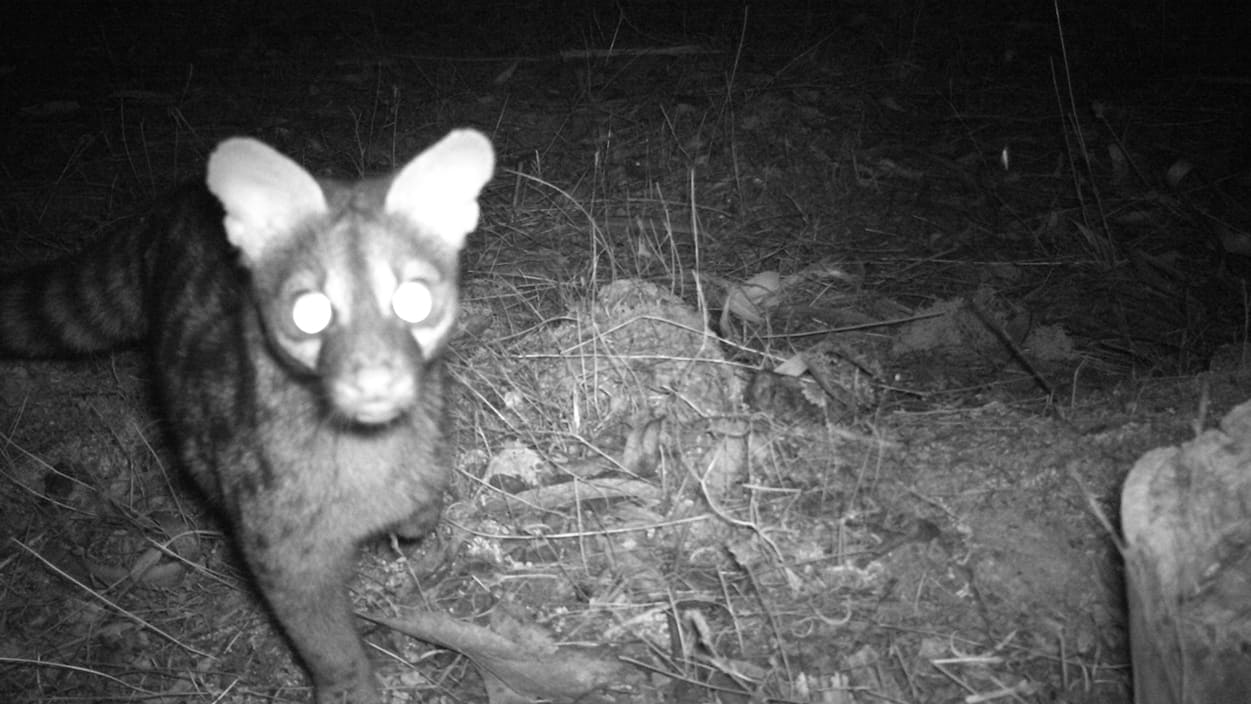This is the bold and agile common genet (Genetta genetta), a mammal that bears some similarities to cats, although it is not related to them. The species was introduced to Portugal a long time ago, has become one of our most common wild mammals, and can be found all over mainland Portugal.
The genet is a solitary species that likes to roam at night in its preferred habitats—wooded and forested areas, vegetation near watercourses and rocky areas—hidden away from human view, but it is also an adaptable species, which is capable of living in many different environments, including those close to urban areas.
During the day, it prefers to seek shelter under bushes and trees, from dense conifers to chestnut trees, or in rocky hollows. It avoids open country, where it is more vulnerable, but tolerates living in small woods or fields of holm oaks, cork oaks, olive groves, vineyards, and other agricultural areas, provided they are flanked by dense hedges or situated near woods and forests.
Its behaviour is essentially nocturnal and it hunts in the dark, returning afterwards to the safety and comfort of its burrow, which it lines with the vegetation it finds nearby.
Although it mainly feeds on the flesh of small animals (such as rodents), insects, berries, and other fruits (especially autumn fruits) are also part of its diet. That is why the genet is considered omnivorous, or rather, mesocarnivorous—the name given to species that, like genets, foxes, weasels, badgers, and otters, supplement their meat-based diet with other foods.
Medium-sized with a long, slender body, genets have brown fur with dark spots and a black stripe running down the length of the body. The genet has a pointed snout, which is patterned white on black (or dark grey) and appears to form small triangles under its small eyes and around its mouth. Males and females are similar in all aspects, but the former is slightly larger.
Its five-toed paws have short, sharp, semi-retractable claws, which it uses to climb trees. Their tails are long and fluffy and are covered with eight to ten rings of black or grey fur. Their short limbs and wide, triangular ears further emphasise their resemblance to cats. Like them, genets are also agile, which is partly due to their light body weight –they weigh between 1.2 and 2 kilograms– and their long, slender bodies. In addition to jumping and climbing trees, they are also strong swimmers.
The genet reaches sexual maturity at the age of two. It breeds all year round, but more births are recorded between April and May and between August and September. Gestation is short, only lasting about 70 days, and it is relatively common for them to have two litters a year. In each litter, one to four offspring are born. At eight weeks, after weaning, the youngsters are ready to leave the nest for the first time, but only at 12 months do they leave it for good.
Although the conservation status of the genet is of “Least Concern” (LC) both in Portugal and worldwide, it is protected by Annex III of the Bern Convention and Annex B-V of the Habitats Directive. As for their protection, attention must be paid to threats such as the reduction and loss of habitats, which contribute to these elusive creatures venturing into urbanised areas, where they are often run over.





